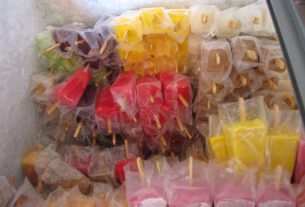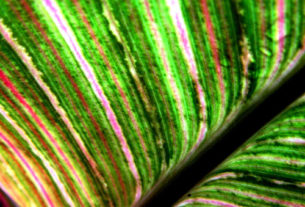Wine has been mankind’s faithful companion since the dawn of time. The wine walks hand in hand with friendship, warm feelings, joy, nice and fruitful conversation. As Goethe put it, “Wine brings joy to the heart, and joy is the mother of virtue.”
In vino est veritas, but this is only a half-truth, because a good bottle of wine hides not only the truth, but other transcendent values as well, beauty and goodness included. As Maestro Fuentes Mares asserts, “Philosophy without wine leads not to the truth, but to dialectic materialism; virtue, without wine, takes you not to goodness, but to Puritanism; art, with no wine, ends not in beauty, but in the music of Arnold Schönberg; eroticism without wine will not lead to love, but to the sinister habit of the wicked bureaucrat who, once a month, orders his wife: ‘Come on, Lola. Today is your turn.'”
The spirit of wine is present throughout the book of books, the Holy Bible. The word, wine, appears everywhere, in the Old as well as in the New Testament. The first miracle performed by Jesus Christ is the transformation of water into wine, to save a wedding party. It is not a coincidence that He chose the wine to give it to us as His own blood.
The Wine Grape
The wine hides many treasures of color, texture, aroma and flavor, as the wine grape has the ability to absorb and fix many things from the soil, the water, the surroundings, and the wine casks used in aging processes. The complexities associated with this capacity makes wine tasting an endless and marvelous adventure. It is our duty to learn to appreciate these treasures to enjoy the experience of the wine to its full extent.
In red wines we may find red fruits, like plum, pomegranate, blackberry, cherry, and strawberry; woods, like oak, walnut, or cedar; spices, like cinnamon, clove, pepper or nutmeg; vegetables, like pimiento or asparagus; and other things like leather, smoke, chocolate, dried fruits, prune, coffee or black currant.
White wines are associated with fruits like apple, pear, melon, peach or pineapple; citrics, like orange, grapefruit, sweet lime and mandarin; spices, like nutmeg and cinnamon; and other aromas like cream, butter, honey and dark sugar.
Common knowledge correlates the color of a wine with the color of the grapes. But the color of the wine comes from chemical compounds called tannines, which oxidize and darken when in contact with the air. These tannines, present in many fruits, are responsible for the darkening we observe when a fruit such as avocado or pineapple is cut.
In the case of the grape, the tannines are concentrated in the skin of the fruit. After the wine grapes are pressed to extract the juice, the winemaker determines how much of the skin will be left in the mixture to be processed. If the juice is filtered, with no skin residues left in it, the wine will be clear, and we will end up with a white wine. If the skin is left in the juice, a red wine will result.
Wine grapes are classified in varietals, or varieties, each with distinct characteristics. Some of the most common varietals are:
To produce red wines: Cabernet Sauvignon, Pinot Noir, Merlot, Petit Sirah, Zinfandel.
For white wines: Sauvignon Blanc, Chenin Blanc, Chardonnay, Semillon.
It is common to find mixtures of grapes in red and white wines, such as Cabernet-Merlot or Chenin-Colombard. The purpose of these mixtures is to combine and balance the flavors and aromas of different varietals into a must.
Varietals such as Zinfandel and Chablis are also used in the manufacture of rosé wines.
Our Mexican Wine
Mexico has a privileged region for the cultivation and breeding of great wines: the northern end of the Baja California peninsula. Up there, between Ensenada and Tecate, lies the famous valleys of Guadalupe and Calafia. This area is well inside the wine producing zone of the northern hemisphere.
Monte Xanic, a house which produces excellent wines, tells us about this region: “Our vineyards and winery are located in the Valle de Guadalupe, in the northernmost part of the Baja California. Here the rather cold Pacific Ocean waters rule the coastal weather. Evenings are cool and our average temperature is much lower than that of other coastal regions in our neighboring California. This gives us a Mediterranean climate with winter rains and a dry spring and summer. This corresponds to some regions in France such as the Rhône and Southern Burgundy.”
The wine arrived to Baja California with the missionaries. A Jesuit priest, Father Juan de Ugarte, took charge in 1701 of the Loreto mission, and it was he who planted the first grapevines on the peninsula.
Until recently, Mexican wines had not been able to establish a reputation around the world. Things began changing for the better with the development of a quality drive in the valleys. Big industries such as Pedro Domecq, Bodegas de Santo Tomás and L.A. Cetto, decided to produce fine wines and to maintain a high standard of quality. Small boutique houses, as Cavas Valmar, Monte Xanic, Bodegas San Antonio, and Chateau Camou, started to make very fine wines in low volumes, thus attaining a level of excellence never seen in Mexico before. And quality is paying off. Some of these wines are exported to Europe, even to France.
Mexican wines to enjoy
Here is a list of suggestions for every occasion. Bracketed approximate retail prices are expressed in U. S. dollars, Mexican value tax added. (Exchange on August 1, 1998 = $1.00 USD to $8.7 Pesos, and $1.00 CAN to $5.7 Pesos)
The Reds:
- Monte Xanic, Cabernet Franc 1994. ($26)
- The grape Cabernet Franc gives wine the same range of flavors and structure as the Cabernet Sauvignon, with the double advantage of less acidity and more softness. This is an intense wine, with a nice balance. For about the same price, Monte Xanic offers a very fine array of reds: Cabernet Sauvignon, Merlot and Cabernet-Merlot. All of them are highly recommended.
- L.A. Cetto, Nebbiolo 1994. ($8)
- Nebbiolo is the grape from which the best wines are made in Italy: Barolo, Barbaresco, Ghemme and Valtellina. This wine features an intense color, the characteristic aromas of the Nebbiolo, good body and balance.
- L.A. Cetto, Cabernet Sauvignon Reserva Privada 1990. ($17)
- L.A. Cetto has a line of non expensive wines, aimed to the budget oriented customer. But this is another thing. This wine has personality and a quality that deserves a good company and a well prepared meal.
- Valmar, Cabernet Sauvignon 1992. ($27)
- Cavas Valmar is one of the boutique houses that has achieved excellence in Valle de Guadalupe. This Cabernet can compete with any wine in the world in its price range.
- Pedro Domecq, Chateau Domecq 1992. ($9)
- An able bodied red with an affordable price.
- Pedro Domecq, Cabernet Sauvignon X-A 1993. ($5)
- The red wine of choice for the day-to-day.
- Chateau Camou, Flor de Guadalupe, Cabernet-Zinfandel 1996. ($14)
- This is a wine with a robust but harmonious character, with an intense red color and blue undertones. Aromas of red fruits, oak and species can be appreciated in this mixture of Cabernet Sauvignon, Cabernet Franc and Zinfandel musts. An original and excellent example of what is happening nowadays in Valle de Guadalupe.
- Chateau Camou, Flor de Guadalupe, Clarete 1996. ($10)
- A young, light and fresh wine, ideal for hot days and informal occasions. As clarets go, chill this one before serving it.
The Whites:
- Monte Xanic, Chardonnay 1995. ($23)
- Chardonnay, the queen of grapes, is the wine grape originated in the French Bourgogne that produces the miracle known as Champagne. This wine from Monte Xanic is one of the best products Mexico has to offer in any category. Honey, butter, apple and pear are easily found in this balanced, complex, very noble wine.
- Monte Xanic, Chenin-Colombard 1996. ($9)
- A mixture that reaches an attractive equilibrium. Sweet aromas of flowers and tropical fruits.
- Valmar, Chenin Blanc 1996. ($15)
- A dry white, with good acidity and equilibrium. Clear, clean and brilliant yellow color, with aromas of guanabana, peaches, apple and pear. A well bodied alternative from Valle de Guadalupe.
- L.A. Cetto, Chardonnay Reserva Privada 1995. ($16)
- With a pale golden color and the intense aromas of the Chardonnay, a good body and excellent balance, this is the best white the house founded by Luis Agustín Cetto has to offer.
- L.A. Cetto, Chardonnay 1996. Viña de Santa Rosa. ($8)
- A good Chardonnay for a good price.
- Pedro Domecq, Chateau Domecq 1995. ($11)
- The counterpart of the Chateau Domecq Cabernet, this is the medium priced white from one of the biggest houses in Mexico.
- Pedro Domecq, Blanc de Blancs X-A 1996. ($5)
- Demi-sec, direct and with aromas of white fruits. Pale yellow, manufactured from a mixture of grapes in which Chenin Blanc makes the most part. This is a non expensive white from Valle de Calafia. Again, the white of choice for the day-to-day.


